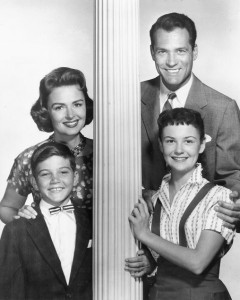A few years ago, Monsignor Charles Pope wrote a short essay defending the use of martial imagery in hymns and homilies. If tradition carries any weight, the case for is a slam-dunk – or, as the old bomber crews used to say, a milk run. As Pope observes, St. Paul himself mentioned weapons and trumpets, demolishing strongholds, taking captives and putting on the armor of God.
But it’s easy to understand the uneasiness such imagery causes certain people. St. Paul lived during the Pax Romana and was martyred before the First Jewish War. He never had occasion to observe firsthand that real wars don’t consist mainly of neat tactical engagements between professional armies. They also involve cooperation with cutthroat irregulars, ethnic cleansing campaigns, massive collateral damage to civilian populations. On the home front they lead to hunts for internal enemies, épurations légales where people who weren’t so bad are denounced or convicted in show trials by people who aren’t so good. Real war is Winnie-the-Pooh’s creator accusing Bertie and Jeeves’ creator of collaborating with the Nazis. You can look it up.
At times, the Church has discredited itself by taking warlike metaphors too literally, especially when it identifies its enemies as living people and existing institutions. To cite a recent instance, many of the bishops who shielded predatory priests were acting from the belief that the criminal justice system belonged to an alien, fundamentally hostile power. We can blame Woodstock all we like for the uptick of abuse, but the idea that churchmen should close ranks to protect their felons from the world’s remedies dates back at least to the time of St. Thomas Beckett.
Yet sin has turned the world into such a hostile environment that the language of battle has a way of creeping into everything, even pledges to heal and nurture. By now, calling the Church a hospital for sinners is practically a cliché, but Pope Francis revitalized the metaphor when he specified that the hospital is a field hospital. For wounded soldiers, treatment in a field hospital is only the first step in what might be a very long process of recovery. There’s nothing luxurious about them. On the contrary, as patients arrive – sometimes fully conscious and screaming – with their fresh wounds only half-dressed, they are gruesome places.
Whether the pontiff has ever seen Gone with the Wind I don’t know, but something tells me he’d appreciate the scene where Scarlett steps outside to discover that half of Atlanta’s defenders are sprawling, in their agony, right in her back yard. Here we see the Bride of Christ finding the Church Militant beaten all to hell and having to figure out what to do about it. It is one mixture of metaphors that actually works.
In the film – I have yet to read the book – Scarlett gets busy emptying bedpans and changing bandages, occupations that force her to choke down her natural horror of bodily effluvia, plus whatever extra horror was bred into her. I think this summarizes what Francis is asking for: not that the Church become tolerant of sin, but that we overcome whatever impulses cause us to recoil from its effects. We’re not supposed to coddle sinners so much as recognize that the wounds of sin and a culture that encourages it, can go very deep and be slow to heal.
There is no contradiction, then, between the Church’s military and medical missions. They complement one another perfectly. If you want a soldier to fight, you make sure he’s fit for the mission. Not even Haig or Cadorna would order one back to the front if one of his legs were still hanging by a tendon.
Patients sometimes do resist treatment violently. My great-uncle, a dentist, served with MacArthur’s army, in a field hospital. Along with his more mundane duties, he offered urgent care to soldiers who’d sustained facial wounds. Once in New Guinea, a Japanese prisoner attacked him on the operating table. According to family legend, the man was missing half his mandible but still had strength enough to snatch my great-uncle’s scalpel and stab him in the chest. The devil, who did not become Prince of the World for nothing, practices his own form of Bushido.
Having churned out so many high-flown words, I suppose it’s only fair I admit that this dirty work of healing spiritual casualties is still very alien to me. When confronted with drunks, liars, bums, and other serious trauma cases, I never react with Scarlett’s grit. As a patient, however, I have lots of experience, and I’d have to rate the Church’s treatment facilities pretty highly.
It’s not that I encountered any miracle cures, or even many convincing bedside manners. But the folks in charge have allowed me to hang around and direct my own care without rushing me too quickly back to duty. Maybe “back” is misleading – as a convert, I was never on duty in the first place. Still, when reflecting on the Church, I often can’t help lapsing into the vaporous clichés of that clichéd figure – the soldier who’s fallen in love with his nurse.















